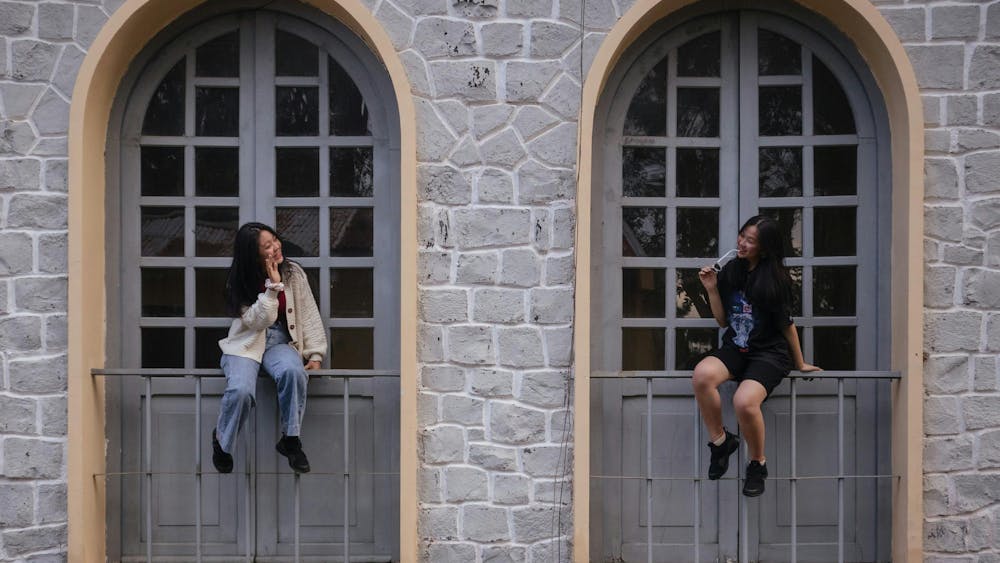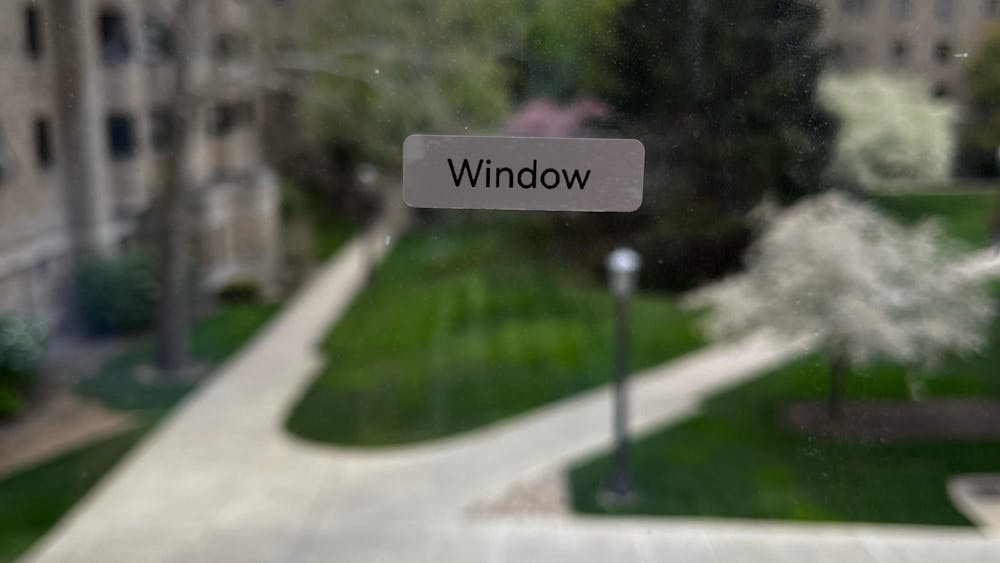The Observer Editorial Board interviewed the three tickets running for Saint Mary’s student body president and vice president — juniors Madeleine Corcoran and Kathy Ogden; Teresa Brickey and Mar Y Selva Albarran Hernandez; and Anna Mullek and Ashlyn Maes — on Tuesday evening. After considering the candidates’ responses to questions concerning their ambitions, qualifications and proposals, The Observer has chosen to endorse Mullek and Maes.
The ticket’s past involvement in Student Government Association (SGA) — particularly with the Big Belle, Little Belle program and the division of social concerns — has equipped it with the knowledge necessary to pursue pragmatic goals and the potential to achieve viable change. Several of their goals, such as introducing hand dryers in Le Mans Hall, reflect the thoughtfulness and attention to detail that should be expected of student representatives. This particular sustainability initiative may be gradually integrated throughout the entire campus, but planning to start with one of the most frequented buildings demonstrates a concrete and believable plan of action.
Mullek and Maes also rely on a practical approach in their mission to extend two meal swipes a week to Murphy’s Cafe. The pair demonstrated intricate knowledge of the costs involved in such an exchange and once again showcased their willingness to start small — with two swipes a week — instead of demanding that all meal swipes should automatically transfer. They also clearly outlined the benefits of this plan to both students and the College, indicating a level of feasibility in implementing it.
Though these objectives may enhance life on campus, the platform fails to address some more pressing concerns — such as mental health, sexual assault and a lack of inclusion at the College — with the same degree of attention and consideration. When asked what they perceived to be the biggest issue afflicting Saint Mary’s, Mullek and Maes hesitated before giving a fairly broad answer. This signals that initiatives regarding more serious topics warrant further development if they seek to make Saint Mary’s a safe and welcoming community. Leaders of the student body should possess an acute awareness of not only areas in which the institution could be improved, but also of pertinent threats to safety and well-being.
With that being said, the ticket’s plan to install more blue safety lights on campus — beginning with the dimly-lit gravel parking lot — reveals its willingness to take practical steps in combating the major issues it does recognize. Mullek and Maes expressed their desire to collaborate with Notre Dame student government in bringing this goal to fruition, establishing their knowledge of ways in which the University and the College can work together. The ticket also hopes to strengthen the tri-campus community by promoting wellness initiatives capable of engaging Notre Dame, Saint Mary’s and Holy Cross, such as the Sister Sprint — a run through the Nature Trail.
Mullek and Maes offer concrete plans that distinguish them from their competitors, as Brickey and Albarran Hernandez possess more of a broad-scale vision for the College. While this ticket’s initiatives such as decreasing the price of a class ring and seeking more Munch Money options on Eddy Street would likely please the Saint Mary’s community, both seem less than feasible and lack the believable action proposal of the aims outlined in the Mullek-Maes ticket. During their interview, Brickey and Albarran Hernandez emphasized their desire to foster an inclusive atmosphere in which all community members feel welcome and safe, but this vague, admirable ambition is not backed by concrete platform goals. Though Brickey and Albarran’s perspectives as students without SGA experience could bring fresh views to the table, The Observer has chosen to endorse candidates whose proven experience within SGA seems to inform their decision-making process.
Corcoran and Ogden pose a number of goals that would be attainable if supported by a definite series of steps, but there seemed to be a lack of research and actionable plans, especially concerning the implementation of a wireless printing system and the improvement of Wi-Fi in dorms. Without the presentation of original strategies, we are hesitant to believe the ticket can achieve its proposed goals. The ticket emphasized its reliance on student perspectives, even vowing to increase SGA accessibility by moving office hours to a central location, such as the dining hall, and to create a suggestion box in which students could place complaints or ideas for improvement. While listening to student voices and gathering feedback should certainly influence leadership, Corcoran and Ogden did not establish any realistic way to translate those conversations to administrators and enact change.
One goal that appeared on each of the three tickets was increasing communication and collaboration between leaders and groups on campus. Mullek and Maes stood out due to their concrete understanding of how to execute this improvement. The pair argues that collaboration was limited in years past and, with that knowledge, was able to identify specific ways in which SGA can increase their interactions with student organizations.
Mullek and Maes hope to ease the transition for first-year students through a continuation of projects already in place and an introduction of new methods. The Big Belle, Little Belle mentorship program — of which Maes served as co-chair — will maintain its mission of promoting bonding among students, while class-specific events will foster unity and sisterhood within various grades.
The pair’s understanding of the need for leaders to delegate seems only natural given their past experience on SGA, as Mullek and Maes have both served on committees and observed how to set and reach goals regarding those specific departments. Quick to admit that neither possesses technology-related skills, the pair will look to appoint a technology chair who can update the Belle Mobile app to include a feature that tracks Blinkie — the van that transports Saint Mary’s students around campus and to and from Notre Dame.
Their main priority, however, involves initiating a Google Calendar to notify community members of campus activities, since adequate publicity of events and lectures is often lacking on campus. This platform point seems necessary given the College’s success at hosting distinguished guests, so documenting upcoming campus happenings in one place would benefit not only the students, but also the visitors who want sufficient attendance at their talks or performances.
Despite the ticket’s failure to address some important topics, such as diversity, their several well-planned areas for advancement offer proof of Mullek and Maes’ ability to work toward enhancing the College community. Though the philosophy of starting small may not generate rapid change, it encourages step-by-step progression and a believable, gradual route to improvement.













